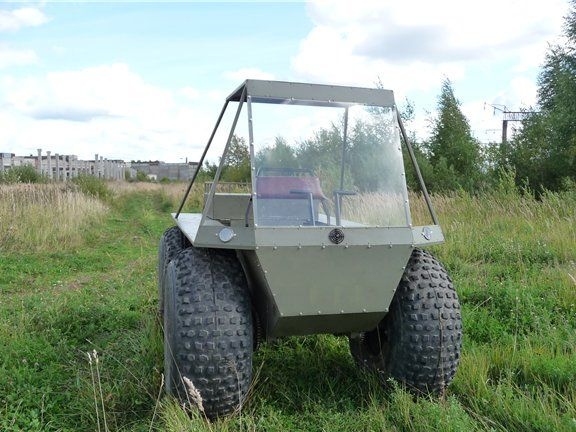
The author of this all-terrain vehicle had an idea to build a small compact all-terrain vehicle, which would not be expensive to build and easily fit in a trailer for transportation. As a result, the author came to the conclusion that the side-turn structure is ideally suited to the described qualities and set about building his all-terrain vehicle.
Details, mechanisms and materials used in the construction of this all-terrain vehicle:
1) Chinese Rotax 14-horsepower internal combustion engine.
2) Complete with the engine was a clutch and two belts to it.
3) Gearbox from Oka car
4) Brakes were also taken from the same Oka machine.
5) gear from the Linx all-terrain vehicle
6) clutch cylinders from the VAZ 2108
Consider in more detail the construction of an all-terrain vehicle.
The first thing the author says is that the layout was changed in such a way as to reduce the width, because the main idea of this all-terrain vehicle is compactness.
Frame Assembly Pictures:
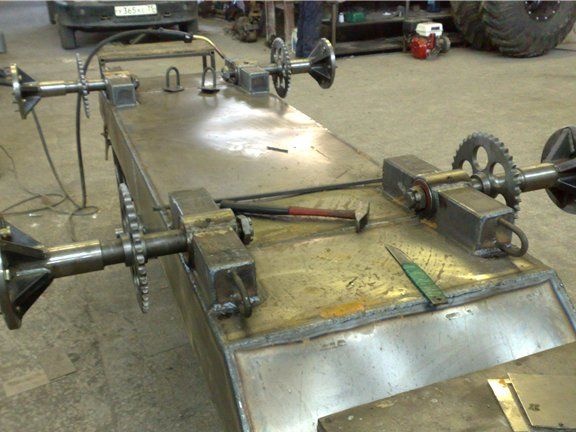
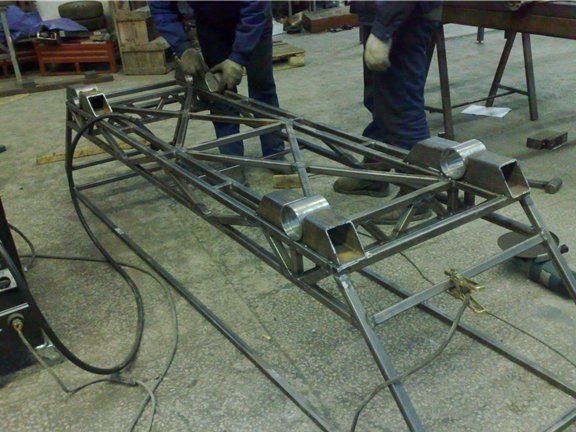
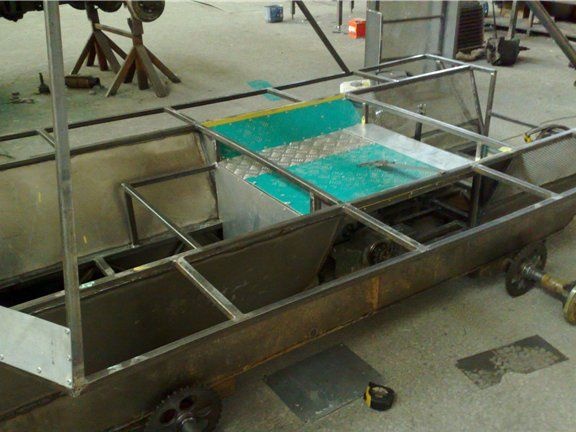
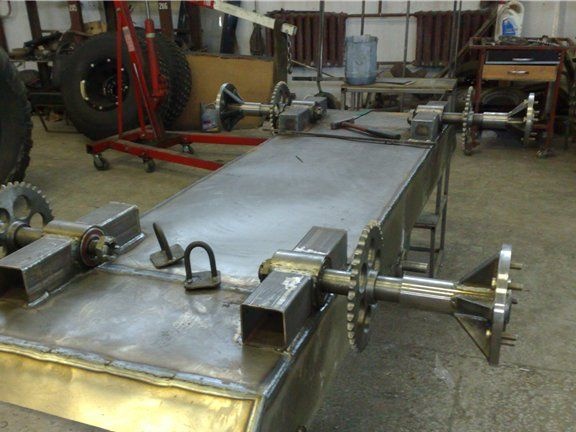
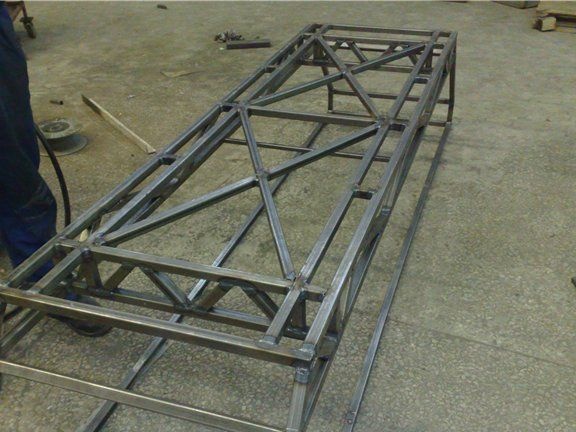
The all-terrain vehicle frame was assembled, as well as the hub units after determining the design. A kind of sealed frame with internal chains is made. Short chain using normal tensioning system.
Next will be the installation of friction clutches and all-terrain brakes, due to which the reliability of the design will be achieved, and most importantly the assembly should not cause any difficulties.
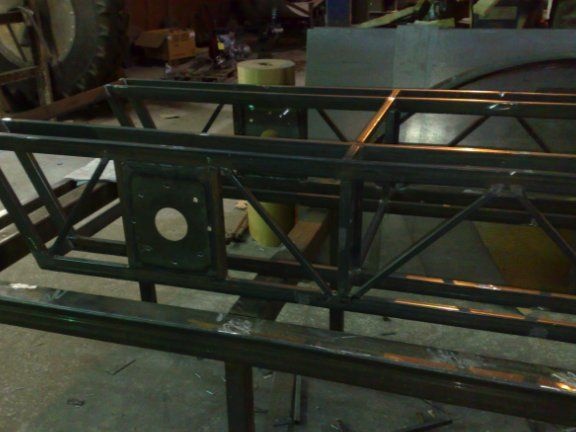
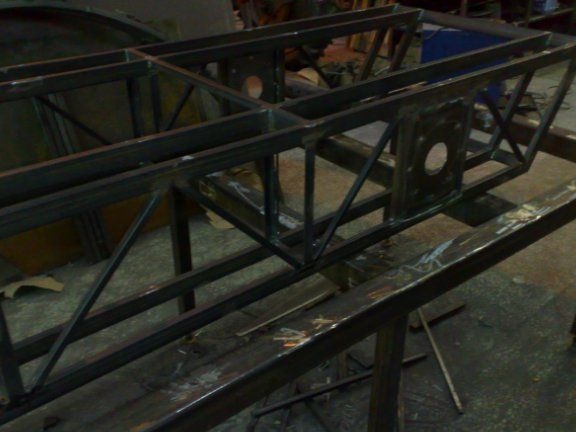
As friction clutches were used baskets, as well as clutch discs from the VAZ 2108.
The clutch from the VAZ 2108 should behave well, but finally it will be clear only after testing.
How does the VAZ-2108 clutch behave in a clutch circuit?
Put on wheels:
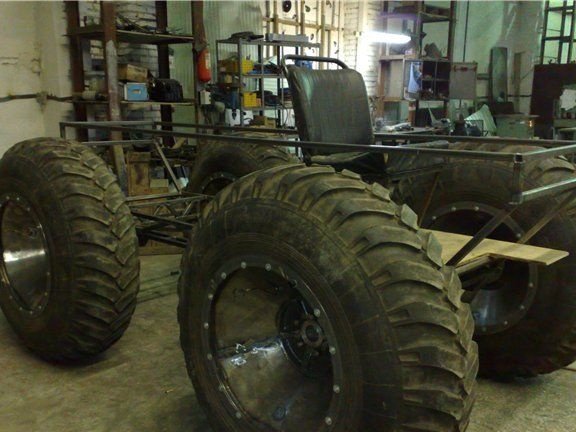
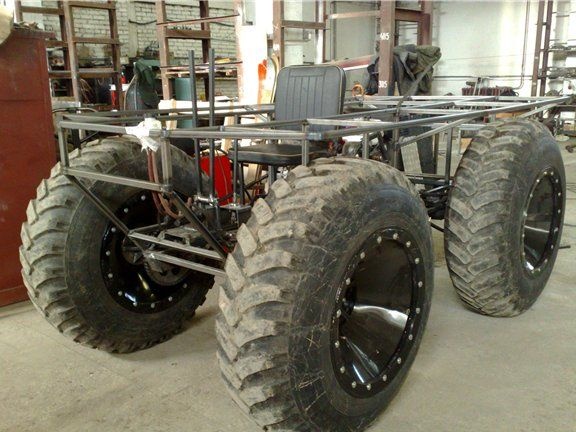
Installing ATV components:


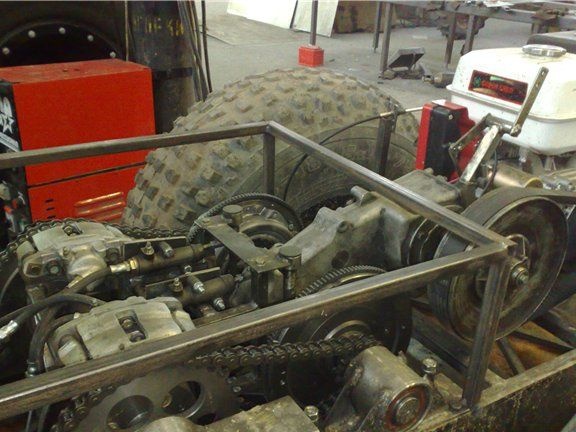
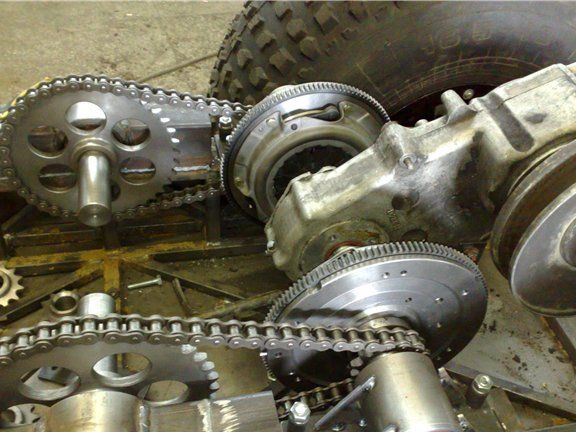
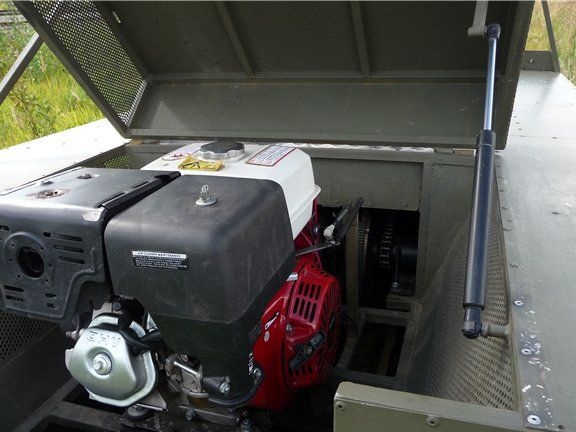
Steering:

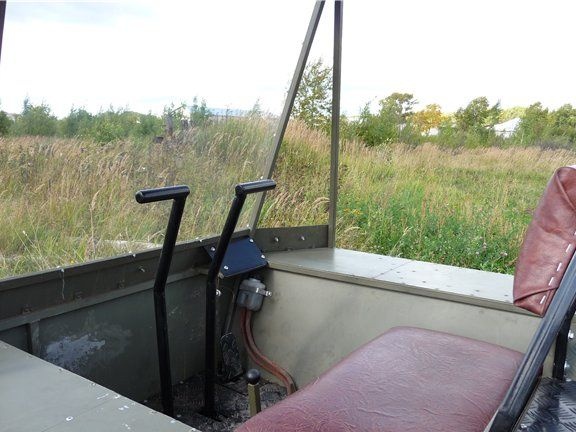
After the main assembly, the author proceeded to test the machine, since it was necessary to find out in which direction to distribute forces over the final assembly of the machine. The impressions from the first tests exceeded all the author’s expectations, the engine power is completely enough since the all-terrain vehicle is very light, maneuverability on asphalt is excellent, as well as off-road patency, all thanks to all-wheel drive and light weight of the all-terrain vehicle.
But a couple of shortcomings were identified. The first is a weak grip, it immediately makes itself felt when the load on the all-terrain vehicle increases, whether it's just a larger number of passengers than two or especially difficult road conditions.
It happened that because of this problem the all-terrain vehicle could not even be turned, so it would be necessary to solve this during the assembly process.
After studying topics and tips on , the author found a way out of the current situation in the use of clutches on wheels from a cornfield. Therefore, a variator from a snowmobile was added to an already half-assembled model, and then clutches with brakes separately. A hull-boat was also made and the engine was moved to the rear of the frame in order to adjust the weight distribution.


As a result, the weight of the all-terrain vehicle turned out to be only about 500 kilograms. The width is 175 centimeters, the length is 255 centimeters, and the height is two meters.

Regarding the features of the building: at first, the author was thinking about turning due to only the differential, you can see this in some photos of the assembly, but later it was decided to abandon this idea. After all, the advantages of friction clutches are quite obvious, so the author took the path of developing a friction scheme for an all-terrain vehicle.
The clutch and brake work are completely separated from each other, but the control is carried out with just two levers, which is very convenient. Thus, it was decided to make the device working according to the following principle: the rollers are rolled in a capir and squeeze the corresponding main cylinder, and the worker is already pushing the main cylinder. Thus, the entire control circuit consists of only two tanks from the brake, as well as four main cylinders, which are the main cylinders in the clutch of a classic VAZ and two brake cylinders from the same VAZ 2108 plus a steering machine.

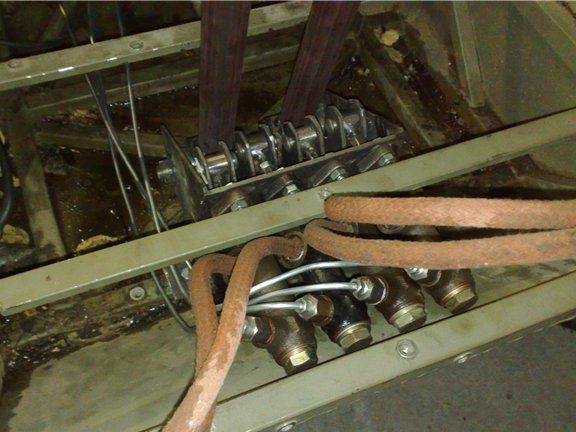
Andrei, a couple of questions: as I understand it, between the clutch and the brakes there is a 1: 3 drop, and on the sides too? and what is your boat width? and reverse gear from what? and how many gears are there?
Between the clutch and the brakes there is a reduced gear one to three, as well as further to the axles one to three.
the width of the boat is about 640 millimeters, and a reverse gear was used from the Lynx snowmobile, the following gears are used: two forward and one back.
The use of the variator has its drawbacks, on serious off-road conditions like swamps, it interferes with proper movement, and to control the all-terrain vehicle you need to have certain skills. That is, the wheels still do not skid, but with a direct connection between the transmission and the wheels and the minimum speed, driving is much more convenient.
After a couple of trips, it was revealed that the rubber passes air, so the author coated the seat to make a tubeless layer. For this, a special cream was purchased with which the tire was coated and after drying, the air gaps were eliminated.
But still, it was decided to keep the pressure lower during long trips.
The video below sets the tire pressure to 0.2 atmospheres:
Due to this, as seen in the video, the shaking decreased noticeably, the handling became accordingly only better. It was also noted that the disadvantages of differential rotation with friction are in direct proportion, that is, the worse the wheels, the easier the steering, the brakes are practically not used, and the rotation is only due to the friction clutch, but in terms of overload it is still very difficult .
Therefore, it was decided to reduce the pressure by 0.1:
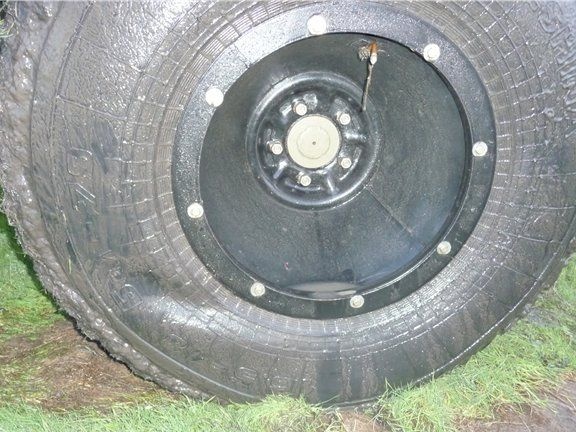
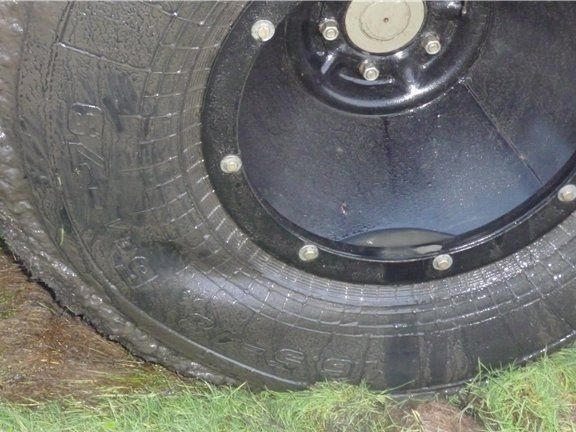
After that, the ride became even better:
The cameras were lowered as far as the folds appeared, a special pressure gauge showed a pressure equal to zero, which real value is not clear.
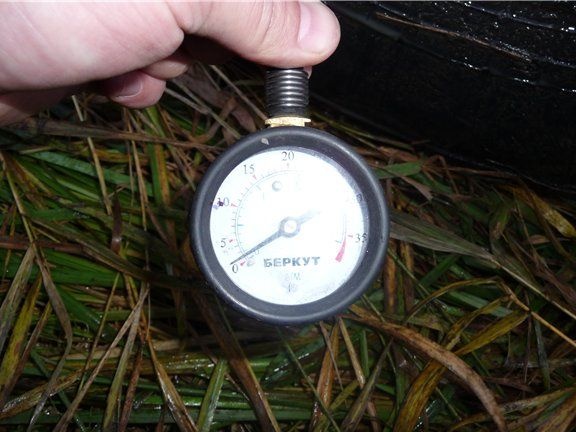
The most amazing thing is that the all-terrain vehicle drove anyway, and as you can see in the video below, there was a steep climb and a U-turn:
Here's what the tire footprint began to look like:
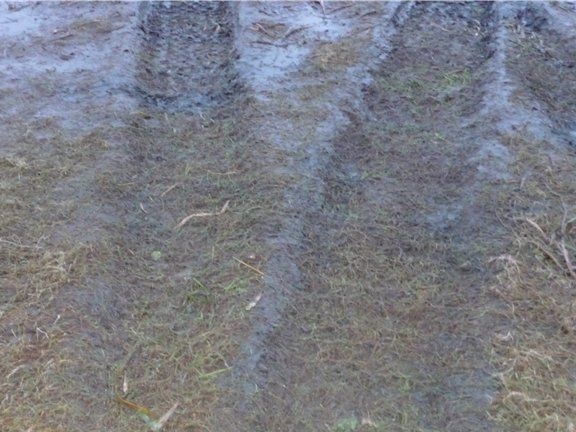
Below is a video in which the rotation is shown only due to the clutch spin:
During the sortie, no other negative aspects were revealed. The variator does not skid, engine power is enough, tire pressure is normal.But it became clear that it was necessary to put tubeless wheels on the all-terrain vehicle, since when using such pressure the tires would be damaged. Although to overcome particularly difficult sections of the track, such a move is very effective, especially if you use a small compressor at 30 l / min due to which the wheel is pumped into normal condition in just two and a half minutes.
Photos of the off-road vehicle:
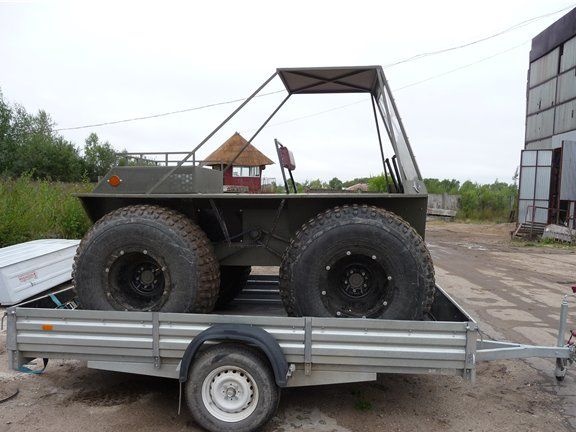
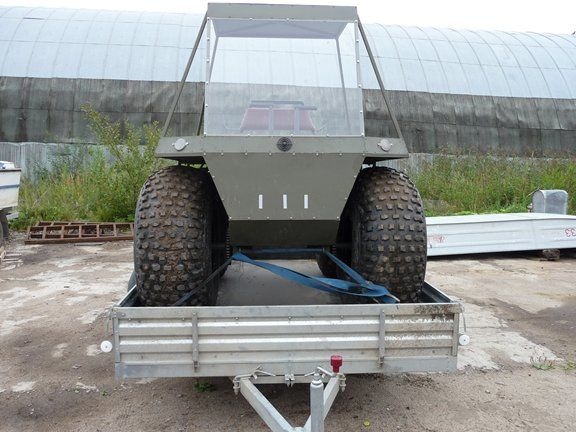

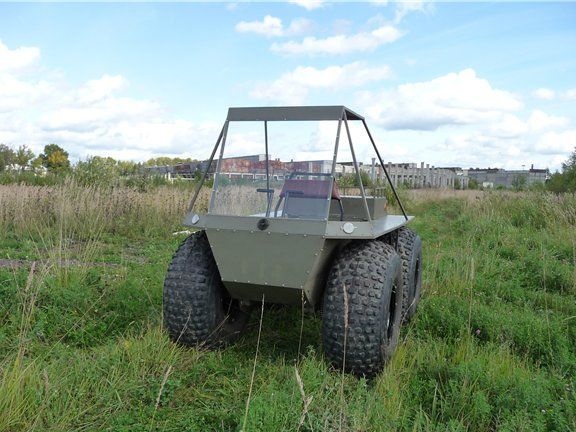
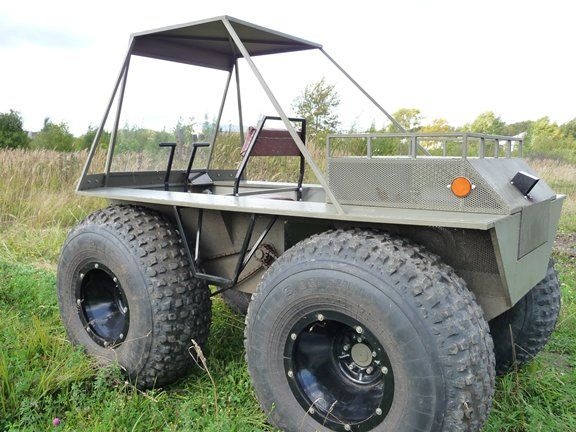
All-terrain vehicle author: Andrey from the city of Vologda
